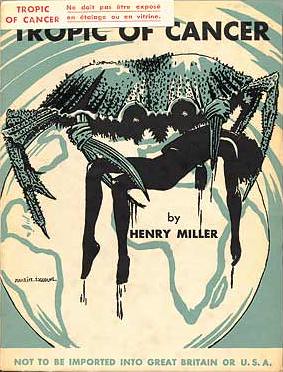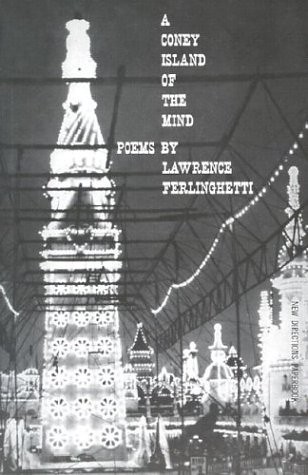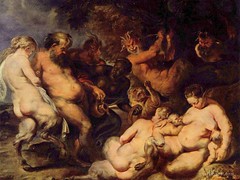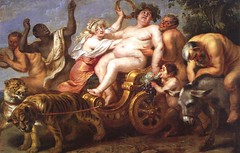Maurice Girodias @90

In 1934, at the age of 15, Girodias drew the disturbing crab picture seen on the original cover of Tropic of Cancer.
The cover states: “Ne doit pas etre exposé en étalage ou en vitrine,” in English that is: “Cannot be displayed in show window.”
Ah … the good old “sous le manteau” days
“I remember a very funny story told to me by Maurice. He once had to take the train to Belgium, where he needed to bring a great deal of money. He had hidden the money bills in his shorts. Once on the train, he was overcome by diarrhea and forgot to remove the money from his shorts when he went to the toilet with the unfortunate result of soiling this small fortune. He cleaned the money as best as he could and afterwards reserved those bills to use as — quite literally — dirty money.” —Sholem Stein
Maurice Girodias (12 April 1919 – 3 July 1990), was the founder of the The Olympia Press. At one time he was the owner of his father’s Obelisk Press, and spent most of his productive years in Paris.
Girodias’s involvement with his father’s business started early. In 1934, at the age of 15, Girodias drew the disturbing crab picture seen on the original cover of Tropic of Cancer. After his father’s early death in 1939, Girodias took over publishing duties, and at the age of 20 managed to survive Paris, World War II, Occupation and paper shortages.
The Affaire Miller ended with Girodias out of jail, but bankrupt and no longer in control of his company.
Olympia Press
Olympia Press was a Paris-based publisher, launched in 1953 by Maurice Girodias as a rebadged version of the Obelisk Press he inherited from his father Jack Kahane. It published a mix of erotic novels and avant-garde literary works, and is best known for the first print of Vladimir Nabokov‘s Lolita.
Most, if not all, Olympia Press publications were promoted and packaged as “Traveller’s Companion” books, usually with simple text-only covers, and each book in the series was numbered.
Olympia Press was also the first publisher willing to print the controversial William S. Burroughs novel, Naked Lunch. Other notable works included J. P. Donleavy‘s The Ginger Man; the French trilogy Molloy, Malone Dies and The Unnamable by Samuel Beckett; A Tale of Satisfied Desire by Georges Bataille and Story of O by Pauline Réage.
English-language presses in Paris
The Enlish-language literary expatriates depended on the presence in Paris of a substantial number of English-language presses, periodicals, and bookstores. These small presses included such famous names as the Contact Press (of American poet Robert McAlmon), the Three Mountains Press (of Bill Bird), the Hours Press (of Nancy Cunard), the Black Sun Press (of Harry and Caresse Crosby), the Obelisk Press (of Jack Kahane), and the Olympia Press (of Maurice Girodias, son of Kahane).


![Stonewall riots @40[1] The Stonewall riots were a series of violent conflicts between New York City police officers and groups of gay and transgender people that began during the early morning of June 28, 1969, and lasted several days. Also called the Stonewall Rebellion or simply Stonewall, the clash was a watershed for the worldwide gay rights movement, as gay and transgender people had never before acted together in such large numbers to forcibly resist police. From the New York Times of June 29, 1969: HUNDREDS OF YOUNG MEN WENT ON A RAMPAGE IN GREENWICH VILLAGE, shortly after 3 A.M. yesterday after a force of plain-clothes men raided a bar that the police said was well known for its homo-sexual clientele. Thirteen persons were arrested and four policemen injured. The young men threw bricks, bottles, garbage, pennies and a parking meter at the policemen, who had a search warrant authorizing them in investigate reports that liquor was sold illegally at the bar, the Stonewall Inn, 53 Christopher Street, just off Sheridan Square.—New York Times, June 29, 1969[2] The Sanctuary epitomized the post-Stonewall era, when gay men had won the right to dance intimately together without worrying about the police.](http://22.media.tumblr.com/Y3KxdEiQup9bs39weHt9Eiebo1_400.gif)






